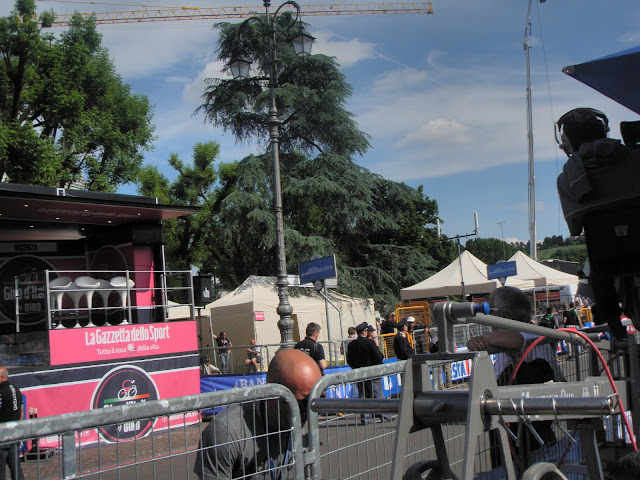Bunch of yellow tulips
In the Christian world yellow is synonymous with Easter, which in the
northern hemisphere falls in the spring, a time of rebirth. I also associate
yellow with spring because of the warmth, the light and the energy it
transmits. So far this springtime has been very unstable, mostly rainy days and
cold weather, but I'm sure that before long the sun will warm us with its
golden rays. Yellow is also the colour of many spring flowers: dogwood and primroses
are the first to bloom in the woods, dandelions colour the meadows and
daffodils and buttercups flutter and dance amongst the tall grass.
Yellow and orange gerberas growing in my garden
Yellow and white primroses
Other yellow flowers
Nel mondo cristiano il giallo è sinonimo di
Pasqua, che nell'emisfero settentrionale cade in primavera, un periodo di
rinascita. Anch’io, quando penso alla primavera, penso al colore giallo per il
calore, la luce e l’energia che mi trasmette. Finora la primavera è stata
prevalentemente instabile, a tratti fin troppo piovosa e capricciosa, ma sono
sicura che tra non molto il sole tornerà a riscaldarci con i suoi raggi dorati.
In primavera molti sono i fiori gialli: le primule e il fiore del corniolo sono
i primi a sbocciare nel bosco, il
tarassaco colora di giallo i prati ed il ranuncolo ed il botton d’oro danzano
tra l’erba alta dei campi.
More garden flowers: yellow roses
Yellow makes me also think of the warm sun of southern Italy , especially of the enchanting Amalfi Coast Italy
Organic lemons
Il giallo mi fa venire in mente il caldo sole
del Sud d’Italia, in special modo all’incantevole Costiera Amalfitana e le
tipiche terrazze coltivate ad agrumeti. Il microclima della zona
favorisce la crescita di un limone particolarmente profumato che viene impiegato nella preparazione del famoso liquore "limoncello".
Lemon zest and alcohol
10 organic lemons
Wash the lemons very well using a brush because it’s actually
the skin you'll use to make Limoncello, dry them and, with a vegetable peeler,
remove the lemon zest without the white pith. Put the alcohol
and the zest in a large glass bowl covered with plastic film and let rest in a
dark, cool place for at least 10 days. Prepare the syrup with 1,25 water and 700 g sugar and bring to a
boil, stirring till the sugar is completely dissolved. When the syrup has
cooled add it to the limoncello mixture, discarding the lemon zest. Pour into
glass bottles and let the limoncello stand for about a week before tasting.
Limoncello is great after a good dinner served well chilled.
Discard the zest from the Limoncello
1
litro alcool 90/95°700
g
zucchero semolato1,25 litri d’acqua
10 limoni non trattati
Lavate molto bene i limoni, asciugateli e con
il pelapatate togliete loro soltanto la parte gialla della buccia. Lasciate macerare, in un recipiente di vetro coperto
con la pellicola, le bucce con l’alcool per almeno 10 giorni, in un ambiente
fresco e buio.
Trascorso questo tempo,
preparate lo sciroppo di zucchero: versate 700 g di zucchero e 1,25 litri d’acqua in
una pentola che scalderete a fuoco medio, mescolando fino al completo
scioglimento dello zucchero. Quando lo sciroppo si è raffreddato aggiungetelo
alla macerata, filtrate le bucce e imbottigliate in bottiglie di vetro. Il
limoncello è ottimo a fine pasto servito in bicchierini di vetro
precedentemente fatti raffreddare nel freezer.
Limoncello







































